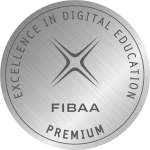In most companies, traditional ways of thinking about learning have become firmly entrenched among everyone involved, from the learner to the HR developer. In the large number of organizations, in-company training is also still very much formalistic. As a rule, the focus is on knowledge transfer and qualification in the technical and methodological area. Learning measures often also serve to provide legal protection, for example in security-relevant areas. The classic forms of teaching and learning with a focus on the area of knowledge development also dominate in inter-company, professional further training.
However, increasing competition for skills creates more and more pressure to change. In more and more organizations, the realization is gaining ground that company training must be consistently strategy-oriented and thus aligned with values and skills.
Value and competency management (skill management) is a planned, controlled and systematic process with the aim of enabling the development of the skills of the entire organization, teams and employees – from knowledge and qualifications to values and competencies – in a self-organized manner, so that the strategic corporate goals are achieved.
Changes in the world of work and their consequences
The consequences of the development of New Work can be seen in the following theses:
Thesis 1: New Work will be a competence world in which values provide motivation and orientation as folders for self-organized action with digitized systems.
Future learning therefore requires a fundamental repositioning of company training management, which in future will play the role of an active, strategy-oriented designer of the framework conditions for learning, e.g., B. the Learning Experience Platform (LXP), and enabler of self-organized learning processes in the company.
Thesis 2: Value and competence-oriented learning concepts with more self-organization and personal responsibility from employees. It basically means that today’s personnel developers either lose their role or become value and competence managers or Change skill managers.
This change requires new structures, roles, competent planners, developers, trainers, tutors and coaches in company learning systems. Value and competence managers are already included as partners in the strategic planning phase, so that they can initiate the necessary learning processes for the implementation of strategic measures in good time. This requires that these development experts are held in high esteem within the company.
Thesis 3: Value and competence management is an important management discipline with which the values and competences (oft skills) are actively recorded, analyzed and evaluated within the company so that their self-organized development is possible.
For this repositioning of the education sector, many cherished role elements must be thrown overboard. However, it is worth taking this path because it means that the education sector will assume a key strategic position in the future.
The changing processes change:
With the change in the world of work, the way in which change processes are designed and accompanied in organizations changes. With increasing agility, companies no longer see themselves as static structures whose final state can be planned. They become more fluid and self-updating. However, agile methods without a corresponding mindset are worthless. Therefore, a cultural change is required, which is shaped by the mindset specifically for the respective company.
Changes in the context of education focus on optimizing learning experiences. In the phase before the start of the project, senior management must answer the strategic questions related to the change project. First, a common understanding of value and competence management in the respective organization is developed. This is followed by an intensive information and discussion process with the managers, who play a central role in the implementation process as skill managers for their respective employees. At the same time, a corresponding process with the individual employees, e.g. B. via bar camps, in order to create the basis for permanent acceptance in this phase.
Structure of the development process:
The introduction of the value and competence development processes basically requires the following sub-steps:

This change process is likely to be successful if the following conditions are met:
• All those involved experience the procedure as beneficial.
• An open communication culture develops.
• The values and ideals of everyone involved are included in the process.
• Possible conflicts between the strategic corporate goals and the needs of employees are identified and resolved in a meaningful way.
A successful change project requires that as many perspectives as possible be brought into the development of the solutions. The following project structure, which has proven itself in practice, is therefore recommended.
Process modules:
A digital enabling space in the form of a learning experience platform with the necessary tools is not enough. Rather, it is crucial that a change process is implemented which results in a fundamentally changed learning culture of self-organization.
This process can be strategy-oriented top-down for the entire organization or agile bottom-up in selected pilot projects.

In principle, strategic value and competency management is recommended (e.g. top-down) because it reaches the entire organization. However, this requires broad acceptance of the change process, from top management to executives and employees.
Agile value and competence management – bottom-up:
If the top-down strategic approach is not feasible, we recommend the agile bottom-up approach. It has proven useful to start with selected pilot groups that are largely self-organized in their working life and have an affinity for Internet or intranet-based systems. Ideally, the group and its manager are aware of the need to develop values and skills and are already looking for a solution to develop in a targeted manner. If it is possible to initiate credible success stories with these pilot groups, which bring a comprehensible benefit for the company and its employees, there is a more probability of gaining acceptance on a broad front.
The following modules are necessary prerequisites for the successful implementation of this change process:
Module 1: Development of a value and competency model:
In an orientation workshop, the need for change in corporate learning resulting from the development of the working world – New Work – is analyzed with the personnel developers and selected specialists and managers. From this are organization-specific value and competency models derived in a moderated process, which serve as the basis for organization-wide value and competency development.
Future corporate learning requires value and competence managers who design and implement the space for self-organized learning and work, accompany and support learning processes and coach managers. As part of the double-decker concept, the future value and competence managers, but also the learners, build up their own values and competences in order to develop and support needs-based learning concepts.
Within this framework, a core team of personnel developers and learning facilitators will be set up, who will then implement selected pilot projects.
The organization is informed about these pilot projects and the results achieved as part of a communication concept. As a result, additional executives can be recruited to implement their own projects. This lays the foundation for an organization-wide change process.
Strategic value and competence management – top-down:
If the change process is actively supported by upper management, e.g. through their active participation as part of “symbolic leadership”, the strategic top-down approach is recommended. These organization-wide, strategic change processes with the aim of future-oriented corporate learning require a structured change process which, according to experience, lasts up to a year and is adapted to the specific requirements of the respective organization.

This implementation process should be designed according to the principle of building up the values and competencies of the key people for broad implementation in the organization as quickly as possible. This achieves a dynamic multiplier effect that enables broad acceptance.
The process starts again with modules 1 and 2. Then three more modules follow:
Module 3: Executive Development:
In Future Learning, managers assume the role of a development partner for their employees. In this module, managers learn how to implement the values and skills assessment of their employees, agree on individual development goals and measures as part of development meetings, secure the necessary framework conditions and promote personalized development processes. These development measures are independently planned, implemented and supported by the values and skills management team.
Module 4: Team Development:
In this module, teams analyze and evaluate their values and competences and derive their target profiles, development goals and suitable measures for targeted team development. These development measures are initiated and supported by the respective managers. The values and competence management team coaches this process.
Module 5: Targeted employee development:
In this module, employees independently analyze and evaluate their individual values and skills based on self-assessments and assessments by others. From this, they derive their personal values and competence goals with advice from their value and competence advisors or learning trainers as well as suitable development measures in the development discussion with their manager.
These development measures are initiated and accompanied by the respective managers with the support of the values and skills development team. Our experts coach this process.
At the end of this first phase, the learning solutions and experiences are exchanged and discussed with all employees and managers in an organization-wide communication process. On this basis, the sustainable further development of corporate learning can be further planned with a high level of acceptance.
With this proposed approach, it is possible to gradually implement the necessary change process from externally organized, seminar-type teaching concepts to self-organized value and competence development in a multiplier model. A cross-organizational value and competence management develops, which leads to a noticeable change in the organizational culture.








